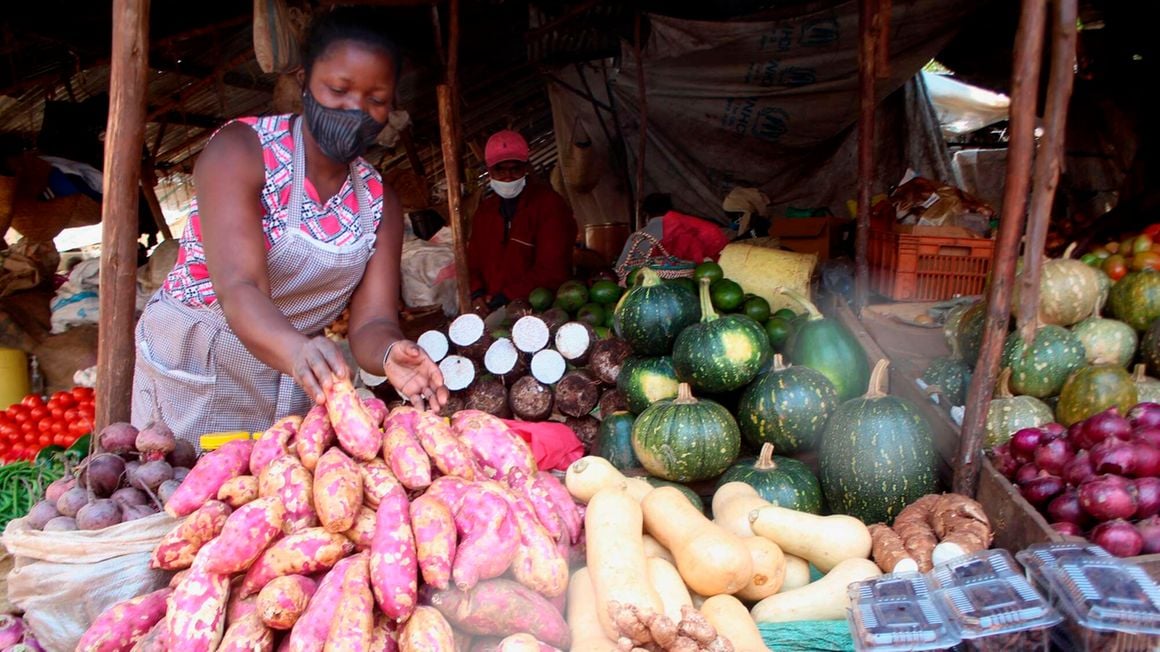
Beatrice Bahati arranging sweet potatoes at City Park Market on July 25, 2020. FILE PHOTO | NMG
Kenya’s cost-of-living measure hit a 65-month high in President William Ruto’s first full month in office on the back of runaway food prices, fuel as well as home equipment and appliances, the statistics agency reported Monday.
Inflation — a measure of cost of living over the last 12 months — climbed to 9.6 percent in October from 9.2 percent a month earlier.
The jump in the cost of basic commodities will further narrow the shopping basket of households who have already been forced to cut on non-essential expenditure amid negative growth in real wages.
The rise in the cost of living last month was the fastest since May 2017 when inflation stood at 11.7 percent.
Consumers on average spent 15.8 percent more to buy foodstuffs than a year ago, while transportation cost increased 11.6 percent, according to the Kenya National Bureau of Statistics (KNBS).
Average price of household equipment and furnishings, on the other hand, bumped 10.9 percent year-on-year, while housing, water, electricity and fuel cost 7.1 percent more than October 2021. The price of alcoholic drinks like beer and whisky also went up 6.7 percent on average after the Kenya Revenue Authority raised excise duty by 6.3 percent in line with average price growth for the financial year ended June 2022.
Kenya is battling the worst drought in 40 years, hurting food production in a country where farming activities are largely dependent on rainfall.
Reduced production of food items like staple maize usually raises the overall cost of living because food accounts for nearly a third of household budgets, according to the KNBS.
Kenyans last endured a sharper rise in cost living more than five years ago when the country similarly suffered prolonged dry weather conditions. Back then, the Treasury allowed subsidies and waiver of import duties to smoothen purchase of key food items such as maize, rice and milk powder from abroad for several months.
Attempts to subsidise the price of two-kilogramme packet of maize flour in mid-July by the previous administration of President Uhuru Kenyatta failed with consumers struggling to access the commodity in retail stores despite costing the taxpayers more than Sh8 billion in a month.
Dr Ruto, who had pledged to lower cost of two-kilo packet of maize meal to below Sh100 during presidential campaigns, has ruled out costly consumption subsidies on flour, saying they are unsustainable.
The President has instead opted to cushion farmers against high cost of fertiliser, releasing 1.3 million, 50-kilo bags of the key input for Sh3,500 per bag compared with average Sh6,500 previously.
“The false comfort of a financial bandage must come to an end because we are risking short-term comfort in place of sustainability in the long-term,” Dr Ruto emphasised last Friday while explaining his policy to drop consumption subsidy on staple maize flour.
The President has also dropped subsidy on petrol, but cut the cushion on diesel and kerosene.
The KNBS data shows a kilogramme of sugar jumped 36.3 percent year-on-year to Sh154.95 on average last month, two-kilo maize flour climbed 33.5 percent to average Sh177.66, while Irish potatoes went up 32.6 percent to Sh90 per kilogramme.
The cost of diesel, largely used for running farm machinery and transportation, surged fastest at 47 percent to Sh163.92 per litre on average while kerosene — largely used for lighting by poor rural households — retailed at Sh147.87, a 41.6 percent climb.
“A second round of inflationary pressure could persist into 2023 due to higher electricity prices, higher domestic fuel pump prices and the excise duty hike from October,” Mulalo Madula, an economist at South African-based Standard Bank, the parent firm of Stanbic Bank, wrote in the Purchasing Managers Index (PMI) report for September.
“In fact, this could restrain consumer spending in the near term."
→ cmunda@ke.nationmedia.com






No comments :
Post a Comment